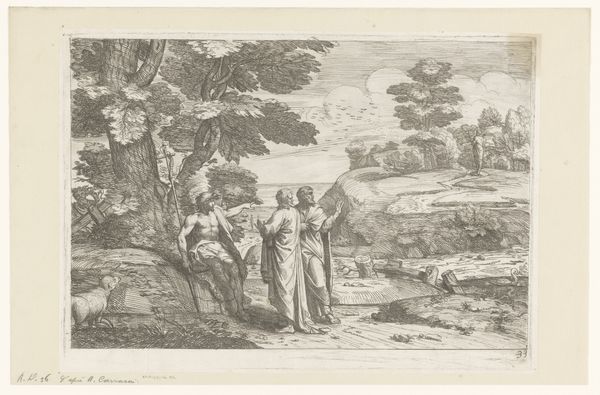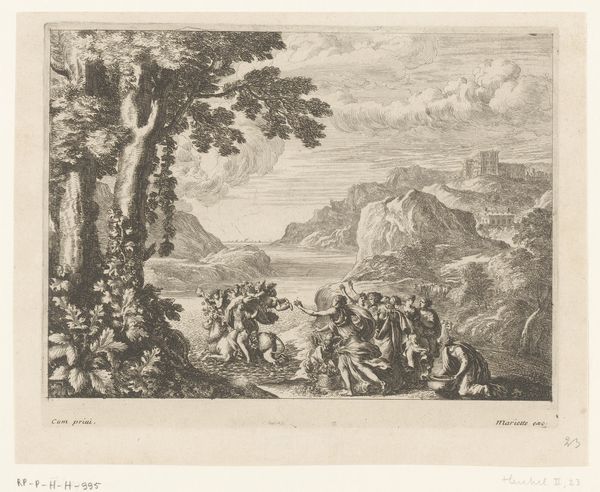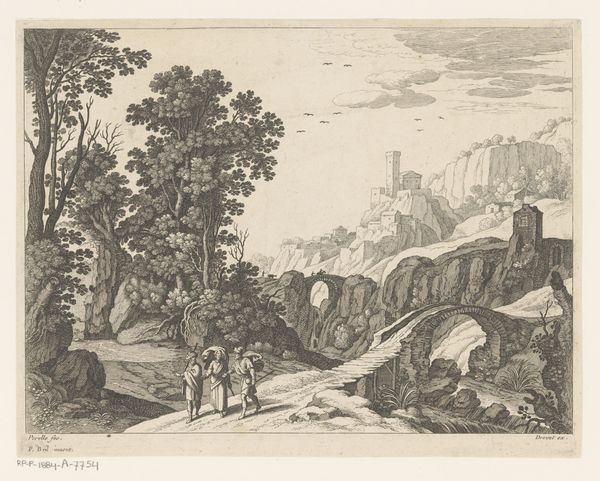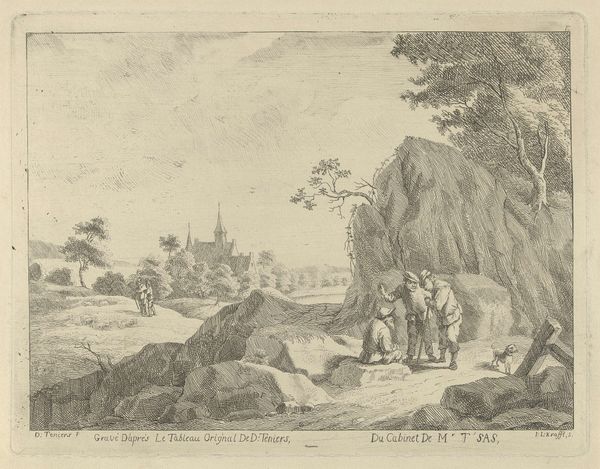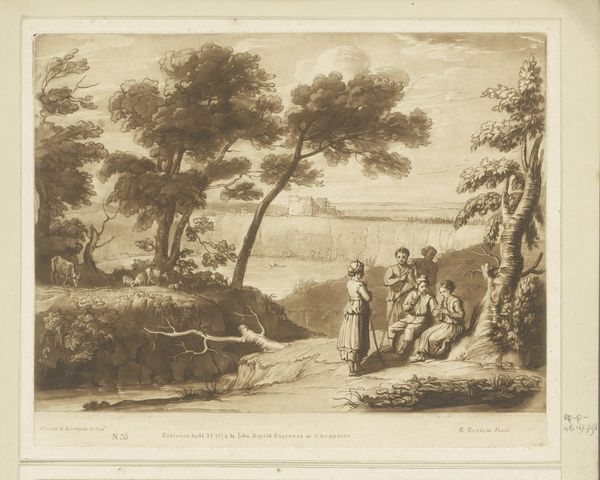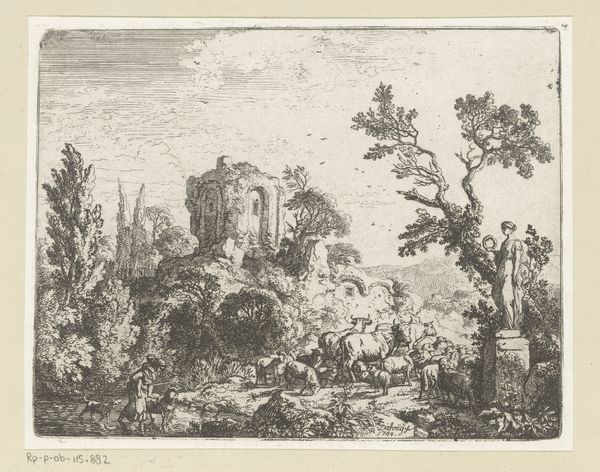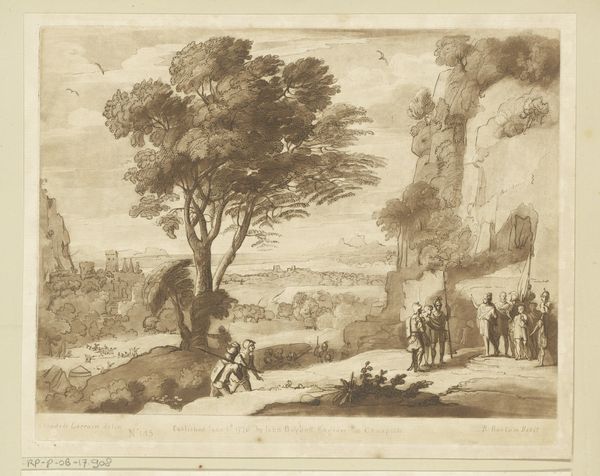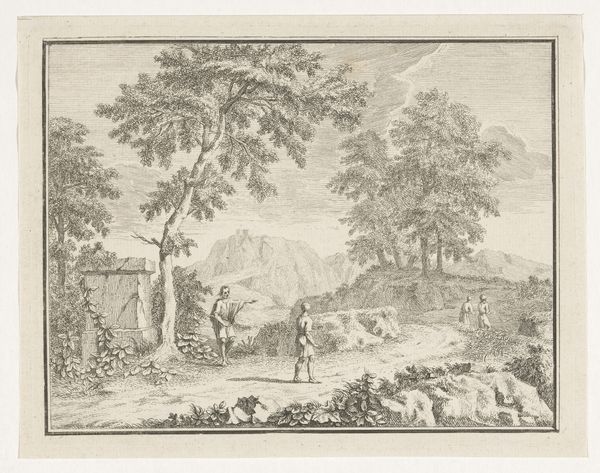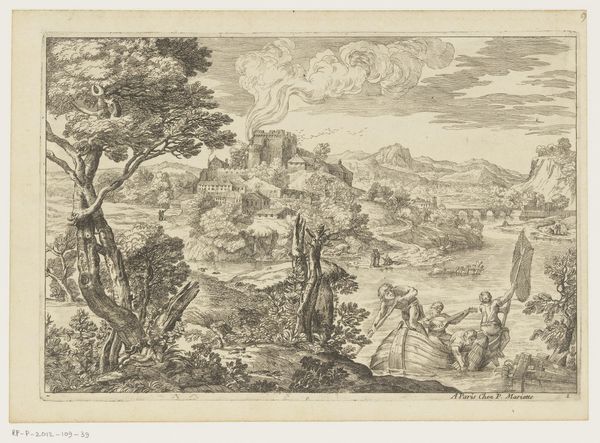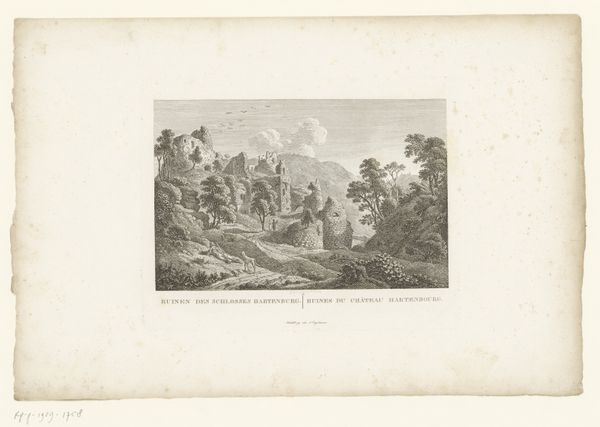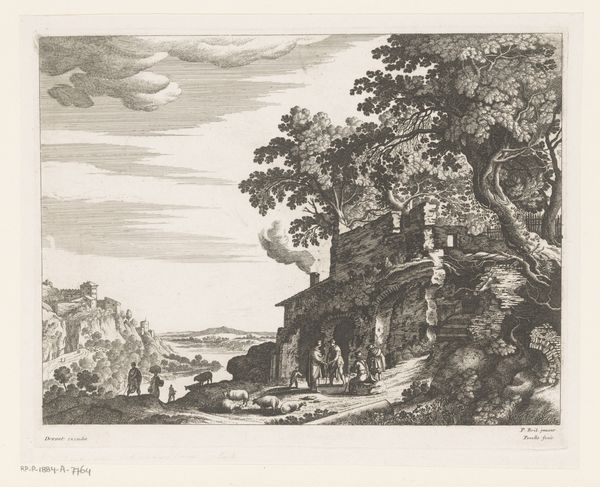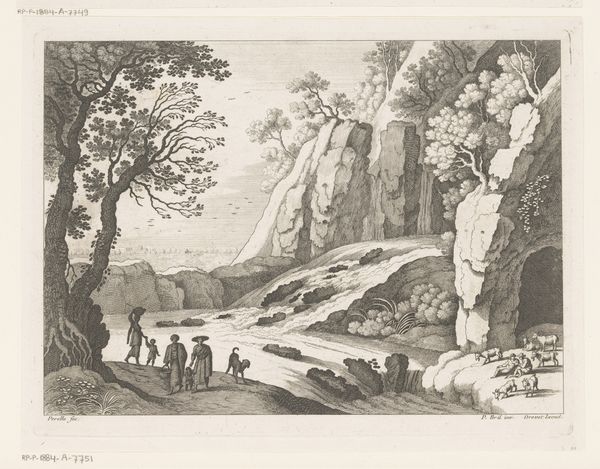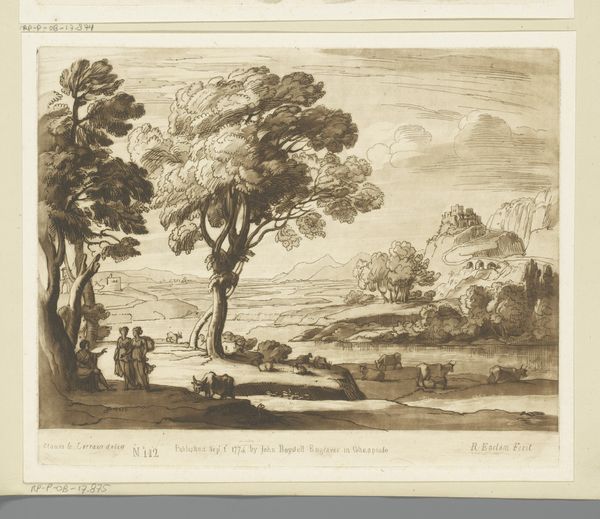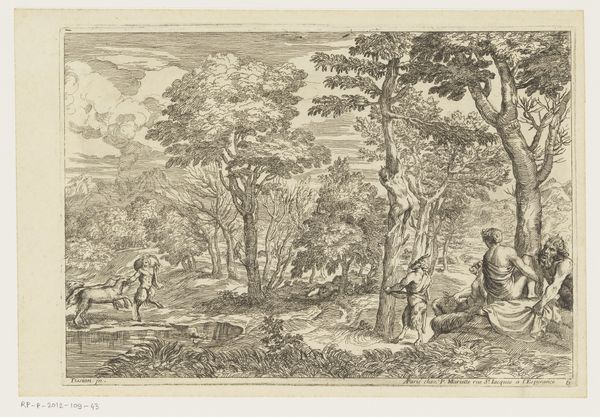
Minerva brengt een bezoek aan de muzen op de berg Helicon Possibly 1777
0:00
0:00
print, engraving
#
neoclacissism
# print
#
old engraving style
#
landscape
#
classical-realism
#
golden section
#
history-painting
#
academic-art
#
engraving
Dimensions: height 207 mm, width 258 mm
Copyright: Rijks Museum: Open Domain
Curator: Approaching this engraving, made possibly around 1777, one can admire Richard Earlom’s neoclassicist style, an echo of idealized antiquity and serene landscapes, representing "Minerva Visiting the Muses on Mount Helicon." The print itself is at the Rijksmuseum. Editor: It has such an interesting golden hue. Looking at it, I feel this calmness wash over me—it’s like witnessing a secret gathering of the goddesses amidst an idyllic landscape. The scale feels vast yet intimate, almost dreamlike. Curator: Exactly! The iconography invites layers of contemplation. The temple in the background speaks of ordered intellect, juxtaposed with the more freeform expressions of art fostered by the muses. Minerva’s presence here signifies patronage and inspiration for the arts and sciences. We see her paying homage to this powerful source. Editor: She certainly makes an impression. I can almost imagine their conversations, a flow of profound insights and inspiration swirling between them like smoke from an unseen fire. Yet, I cannot help but feel some restrained mood too. Is it because she is depicted on this border that separates our natural earthly world with her rational mind? Curator: It's astute that you perceive restraint and tension within this scene. It mirrors some neoclassicist debates around emotion versus reason. Here, the clarity of line in the engraving reinforces those virtues so pursued within that period’s aesthetic thought. Think about the landscape: the rugged edges against open vistas of idealized civilization are characteristic of this movement. Editor: Hmmm, so true, so true… this feels like more than just surface beauty; it suggests the power and challenges intertwined with creativity itself. Looking at that temple and horizon... I am contemplating the value of inspiration when the goal of human perfection dominates. Curator: The dialogue embedded within is a potent message about aspiration, learning, and cultural memory. It serves as a mirror reflecting our persistent human desire to grasp at perfection through beauty, thought and structure. Editor: You know, looking at this piece, I will carry with me this quiet landscape buzzing with questions long after stepping away.
Comments
No comments
Be the first to comment and join the conversation on the ultimate creative platform.
